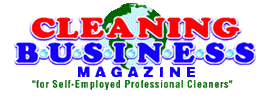Training Tip # 7 – Using Writing Surfaces;
I like to use writing surfaces in my presentations and classroom activities. I find them to be a great way to actively involve students in the learning process. I also like the fact that after the class I can take the written sheets and type them up and in some cases to turn them into PowerPoint slides which saves me from have to write some things on the flip chart in the next class.
If you haven’t seen or used Static Cling Sheets in place of paper, give them a try, they are come in several sizes, are inexpensive, easy to travel with and far more flexible in use than paper. Markers work great on them and they cling to any smooth flat surface without tape, adhesive or pins. http://www.grafixplastics.com/cling.asp
I think the biggest benefit of using writing surfaces comes when I get students out of their chairs and in front the writing surface in group exercises. This keeps everyone on their toes and involved vs. sitting listening to me talk.
In some cases, I will speak for 5, 10 or 15 minutes on a subject and then break the class up into small groups each dealing with a different but related subject and have them make notes on writing surface about what they know about a subject or questions they would like answered. Then I go around the room answering one or two question from each groups writing surface. If I don’t get all the questions answered I will allow time for the students to discuss the remaining questions in their group.
One approach that I’ve used several times with pretty good success is to rather than me talk, I will break the entire group up into small groups and have them write question or talking points on the writing surface and then I go around the room speaking about subject on the students lists. After I discuss a topic I always ask other participants if they have something about this subject that they’d like to add. Everyone seems to enjoy this approach and it assures that I as a speaker cover topics that are actually of interest to attendees vs. what I think they would like to hear me talk about. It gets everyone involved and is a great interactive exercise. Basically it allows me to customize any presentation to the needs of the participants.
The new Post it type flip chart paper is handy as it comes with a safe adhesive on the back of the paper that sticks to any flat surface. They don’t work on fabric or textured vinyl surfaces, in which case tape or stick pins are needed.
A good accessory is a box of markers in a variety of colors. If you are using a dry erase white board, be sure to use dry erase markers. If someone has used the wrong type of marker on a white board, a little lacquer thinner on a rag will usually remove it. Several companies make cleaners and polishes for white boards; these come in handy and are available from your local office supply store.
One way to pre-organize the small groups is to pre-number the name badges (small colored number in one corner of every badge) in groups of 1 to 4, 5, or 6 depending on the size of the group and how many participants you want in each sub-group. I find this easier and more effective than having attendees number themselves off 1, 2, 3, etc.
















